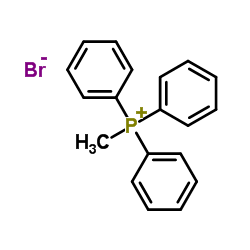Glucose transport by mixed ruminal bacteria from a cow.
H Kajikawa, M Amari, S Masaki
Index: Appl. Environ. Microbiol. 63(5) , 1847-51, (1997)
Full Text: HTML
Abstract
The glucose transport of mixed ruminal bacteria harvested from a holstein cow fed 5.0 kg of Italian ryegrass and 1.5 kg of flaked corn a day was investigated. The Eadie-Hofstee plot characterized two transport systems: a high-affinity, low-velocity system and a low-affinity, high-velocity system. The former system (K(m) = 16 microM; Vmax = 2.2 nmol/min/mg of protein) is considered dominant under this feeding condition based on the glucose concentration in the rumen (< 1 mM). In light of the facts that the protonophore SF6847 and the lipophilic triphenylmethyl phosphonium ion had no effect on the high-affinity system and an artificially generated proton gradient and electrical potential across the cell membrane did not increase glucose transport, a proton motive force is not be involved in the system. On the other hand, from the facts that chlorhexidine inhibited about 90% of the high-affinity system while iodoacetate showed no significant effect, and a high phosphoenolpyruvate-dependent phosphorylation of glucose was actually shown, the phosphoenolpyruvate-dependent phosphotransferase system is considered the main system in the high-affinity system. Moreover, as shown by the facts that harmaline inhibited about 30% of the high-affinity system and the artificially generated sodium gradient across the cell membrane significantly stimulated glucose transport, this system also includes sodium symport to some degree. The high-affinity system was sensitive to a decrease in pH (< 6.5) and was inhibited by the presence of sucrose, mannose, and fructose.
Related Compounds
| Structure | Name/CAS No. | Molecular Formula | Articles |
|---|---|---|---|
 |
Methyltriphenylphosphonium bromide
CAS:1779-49-3 |
C19H18BrP |
|
Understanding channel blocking in the nicotinic acetylcholin...
2001-01-01 [Receptors Channels 7(4) , 273-88, (2001)] |
|
Simultaneous extraction of flavonoids from Chamaecyparis obt...
2015-01-01 [J. Chromatogr. Sci. 53 , 836-40, (2015)] |
|
Primary causes of decreased mitochondrial oxygen consumption...
2002-02-01 [Am. J. Physiol. Regul. Integr. Comp. Physiol. 282(2) , R372-82, (2002)] |
|
Determination of bismuth in pharmaceutical products using me...
2007-02-19 [J. Pharm. Biomed. Anal. 43(3) , 1033-8, (2007)] |
|
Bioenergetic effects of mitochondrial-targeted coenzyme Q an...
2012-09-01 [J. Pharmacol. Exp. Ther. 342(3) , 709-19, (2012)] |